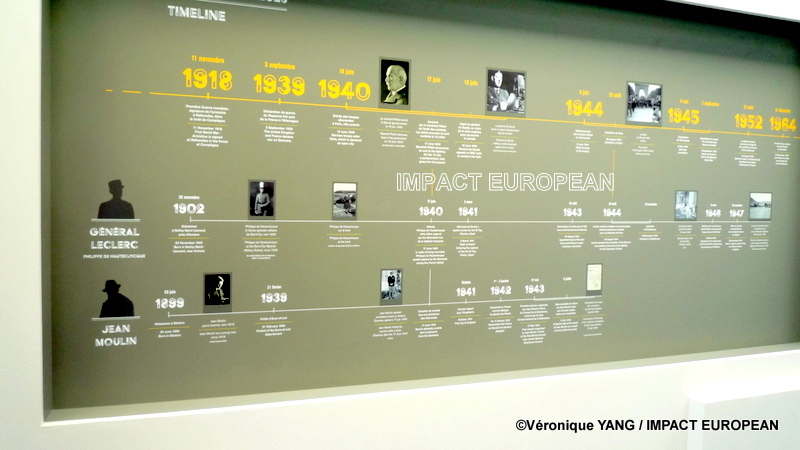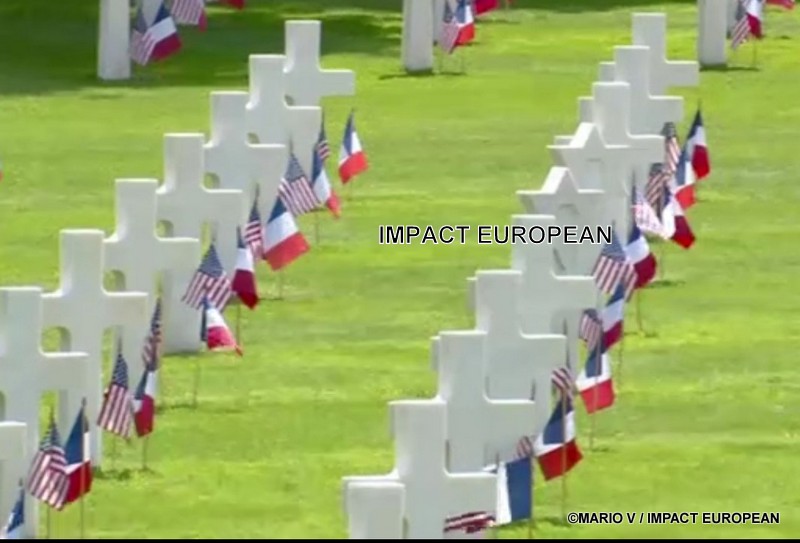June 6 is considered the date of the Allied landings in Normandy, the 76th anniversary of which we are celebrating this year.
Allied troops from the United States, Canada, Norway, Australia and New Zealand landed on June 6, 1944, on 5 beaches in Normandy: Utah Beach and Omaha Beach where 2,500 soldiers perished among the 34,000 Americans disembarked with trucks, tanks to clear the way and dig up the German mines while avoiding getting bogged down in the sand. Barrage balloons protected the ships from grazing German planes; Gold Beach, Juno Beach and Sword Beach where nearly 21,000 Anglo-Canadians land on bicycles). These beaches are located between the place called La Madelaine, in Cotentin and Ouistreham in Calvados.
On the morning of June 6, at 6 am, 156,000 soldiers landed in Normandy to liberate France occupied by the German army, they were preceded by 18,000 paratroopers, a good half of whom were killed; they were to release and secure all access for troops and motorized equipment inland.
The date of the « Overlord » operation chosen at the « Trident » conference held in Washington in May 1943 was postponed by a month, that is to say in June 1944 because the landing on the western coasts of Europe, led by the general Dwight Eisenhower required more men over a larger landing area, the number of beaches having increased from 3 to 5. This operation was considered to be the main operation for 1944.
The precise 6 o’clock hour brought together different conditions: the full moon for easier maneuvering of airborne troops dropped in the night; dawn for the discreet approach and for the objectives to be identifiable by the navy responsible for bombing them and a tide in the middle of its rise, the German marshal Rommel, in charge of the defense of the coasts, having loaded them with traps to disembowel boats and set off explosives on contact. This is how nearly 6,900 warships and transporters disembarked during the D-day, accompanied by the bombardment of 5,000 tonnes of bombs dropped on the Germans, the roads and the railways by Allied planes along the coast from Le Havre to Cherbourg in order to prevent the exact location of the landing area. The choice of the Allies fell on Normandy following different criteria: The Breton coast too far from England; the flooded lands in Holland; the currents of the Belgian coast too dangerous without forgetting that the Germans were waiting for the Allies in Pas-de-Calais.
The landing will be followed by the « Battle of Normandy » which lasted from June to August 1944 and allowed the Allies to open a new front in Western Europe, facing the troops of the Third Reich despite the difficulties linked to the « war of the hedges « due to hedgerows which facilitated the enemy. It is the addition of a hedgecutter to the front of the tanks which will break down the hedges and neutralize the enemy.
On July 24, 1944, General Bradley launched Operation Cobra by bombing a small area of the Cotentin region around the Saint-Lô-Périer road, creating a breach to assist General Collins’s infantry and tanks. Coutances is released then it is Avranches’ turn on July 31 before heading to Brittany.
On August 1, 1944, according to the wishes of the English and the Americans, the French first division, the 2nd DB commanded by General Leclerc, entered the Battle of Normandy and liberated Alençon on August 11; there was practically nothing left of the Luffwaffe on August 7.
On August 19, the German forces were completely surrounded. About 80,000 Germans are locked in the Falaise pocket. The same day, in Paris, we are witnessing fighting around the Prefecture of Police and in the suburbs, this will lead to the liberation of Paris on August 25 with the day before the entry of the battalion of the Nueve of the 2nd DB of General Leclerc .
The other landing of the Second World War was that of Provence. It took place on August 15, 1944 a little more than 2 months after « Overlord » on the Normandy beaches; it marked the start of Operation Dragoon, co-led by the Americans and the French, including General de Lattre de Tassigny. The objective was to liberate the ports of Toulon (83) and Marseille (13), to supply the troops and the total reconquest of France. Thousands of soldiers (400,000 including 250,000 in the colors of France, including a large part of Algerians, Moroccans, Tunisians or Senegalese) were parachuted when the first bombs were dropped and the rest of the forces docked between Toulon and Cannes (06). Fréjus (83) falls on August 16 as does Draguignan (83). In barely a week, Toulon and Marseille were recovered from the Germans. The forces of the 2 operations which should have been launched simultaneously, found themselves in Burgundy having followed the Rhône.
This year, D-Day commemorations have taken place at a minimum; the families being unable to move from abroad, the tombs were flowered by the gardeners. An overview of the Patrouille de France on Omaha Beach (Calvados), but no spectacle or aerobatics for closed-door ceremonies, without audience, with, Secretary of State Geneviève Darrieussecq and a single veteran, former military medic from 95 years having landed and now living in Normandy. In Vierville-sur-Mer (14), the international ceremony took place in the presence of the Secretary of State and the ambassadors of 9 countries.
We found this same atmosphere linked to the epidemic at Ste-Mère-Eglise (50), a symbolic place of the Landing with its paratrooper hanging on the bell tower, where the commemorations usually last 4 days; traders and restaurants that suffered heavy losses. We were far from the ceremonies organized for the 75th anniversary where heads of state from around the world, veterans and several tens of thousands of people were present in Calvados and in the English Channel. Normandy promises a large-scale commemoration for 2021. Furthermore, the inauguration of the British memorial at Ver-sur-Mer which was to be held on D-Day should not take place before the spring of 2021.




Share this content:



Plus d'histoires
Private Health Schools Under Scrutiny: Council of State Sides with the French Order of Physiotherapists
Dordogne: Mayor Excluded for Antisemitism Avoids Trial, LICRA Reacts
Berlin, Strategic Crossroads: Ukraine, European Security, and the Peace Economy